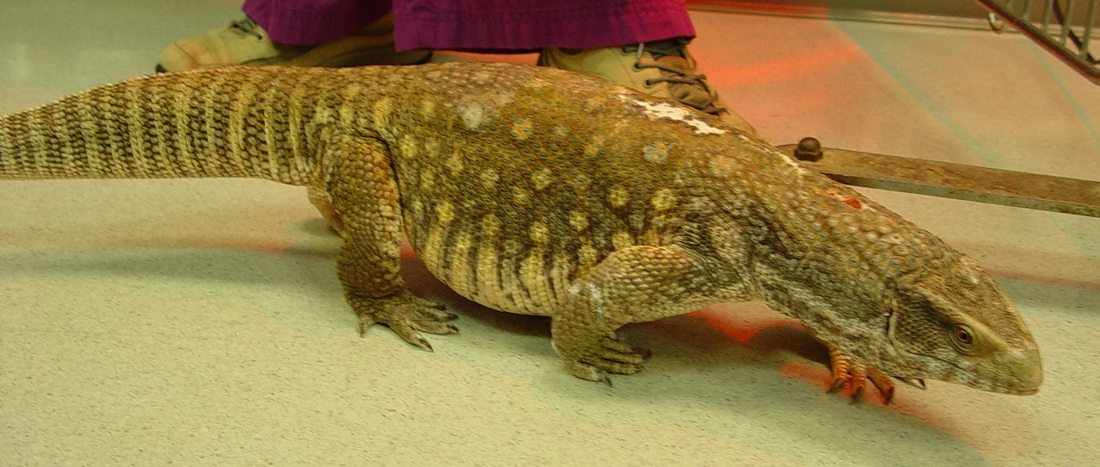
Baby Savannah Monitor Care: A Comprehensive Guide
Introduction
Savannah monitors (Varanus exanthematicus) are captivating reptiles that have gained popularity as exotic pets due to their striking appearance and intriguing behavior. However, these animals require specialized care to thrive in captivity, particularly during their delicate babyhood. This comprehensive guide will provide all the essential information you need to ensure the well-being and proper development of your baby Savannah monitor.
Housing Requirements
-
Enclosure Size: Baby Savannah monitors require a spacious enclosure that allows for ample room to move, explore, and thermoregulate. A minimum enclosure size of 4 feet long, 2 feet wide, and 2 feet high is recommended for a single baby.
-
Substrate: The substrate should provide a natural and comfortable environment for the baby monitor. Options include reptile carpet, cypress mulch, or a mixture of both. Avoid using sand or gravel, as these materials can be ingested and cause health problems.
-
Hide Boxes: Provide multiple hide boxes within the enclosure to create secure and sheltered areas for the baby to retreat to. These boxes should be large enough for the baby to fit comfortably inside.
-
Basking Spot: Establish a basking spot within the enclosure where the baby can regulate its body temperature. Use a heat lamp or ceramic heat emitter to create a basking spot with a temperature gradient ranging from 95-105°F (35-41°C).
-
Cool Spot: Provide a cool spot within the enclosure where the baby can retreat to escape the heat. The cool spot should have a temperature around 75-80°F (24-27°C).
-
Humidity: Baby Savannah monitors require moderate humidity levels between 50-60%. Use a hygrometer to monitor humidity levels and adjust accordingly using a humidifier or misting system.
Feeding
-
Diet: Baby Savannah monitors are insectivores and should be fed a diet consisting primarily of insects. Suitable insects include crickets, dubia roaches, and mealworms.
-
Feeding Frequency: Feed baby Savannah monitors daily, offering a variety of insects. The amount of food should be adjusted based on the baby’s size and appetite.
-
Gut Loading: Before feeding insects to the baby monitor, gut load them with nutritious foods such as fruits, vegetables, and calcium supplements. This ensures that the baby receives essential nutrients.
-
Supplements: Provide calcium and vitamin D3 supplements to the baby monitor regularly. These supplements are crucial for bone and shell development.
Health Care
-
Veterinary Care: Establish a relationship with a veterinarian who specializes in reptile medicine. Regular veterinary checkups are essential for monitoring the baby’s health and detecting any potential issues early on.
-
Parasite Prevention: Baby Savannah monitors can be susceptible to parasites such as worms and mites. Regular fecal exams and parasite treatments are recommended to prevent infestations.
-
Common Health Problems: Common health problems in baby Savannah monitors include respiratory infections, digestive issues, and metabolic bone disease. Prompt veterinary attention is crucial if any symptoms of illness are observed.
Handling and Socialization
-
Handling: Handle baby Savannah monitors with care and respect. Avoid excessive handling, as this can stress the animal. Allow the baby to acclimate to your presence gradually by offering food or treats.
-
Socialization: Socializing baby Savannah monitors is important for their well-being. Introduce them to different people and environments in a positive and controlled manner. This will help them become less fearful and more comfortable in human presence.
Growth and Development
-
Growth Rate: Baby Savannah monitors grow rapidly during their first year of life. They can gain several inches in length and weight within a few months.
-
Shedding: Baby Savannah monitors shed their skin regularly as they grow. Provide a humid environment and a rough surface for the baby to rub against to facilitate shedding.
-
Sex Determination: Determining the sex of a baby Savannah monitor can be challenging. However, experienced breeders may be able to identify the sex based on the shape of the cloaca and the presence of hemipenes.
Conclusion
Providing proper care for a baby Savannah monitor requires a commitment to their specific needs and a deep understanding of their biology. By following the guidelines outlined in this comprehensive guide, you can ensure that your baby monitor thrives and reaches its full potential. Remember, these animals are long-lived and require a lifetime of care and attention. With proper care and dedication, you can enjoy the companionship of a healthy and happy Savannah monitor for many years to come.
